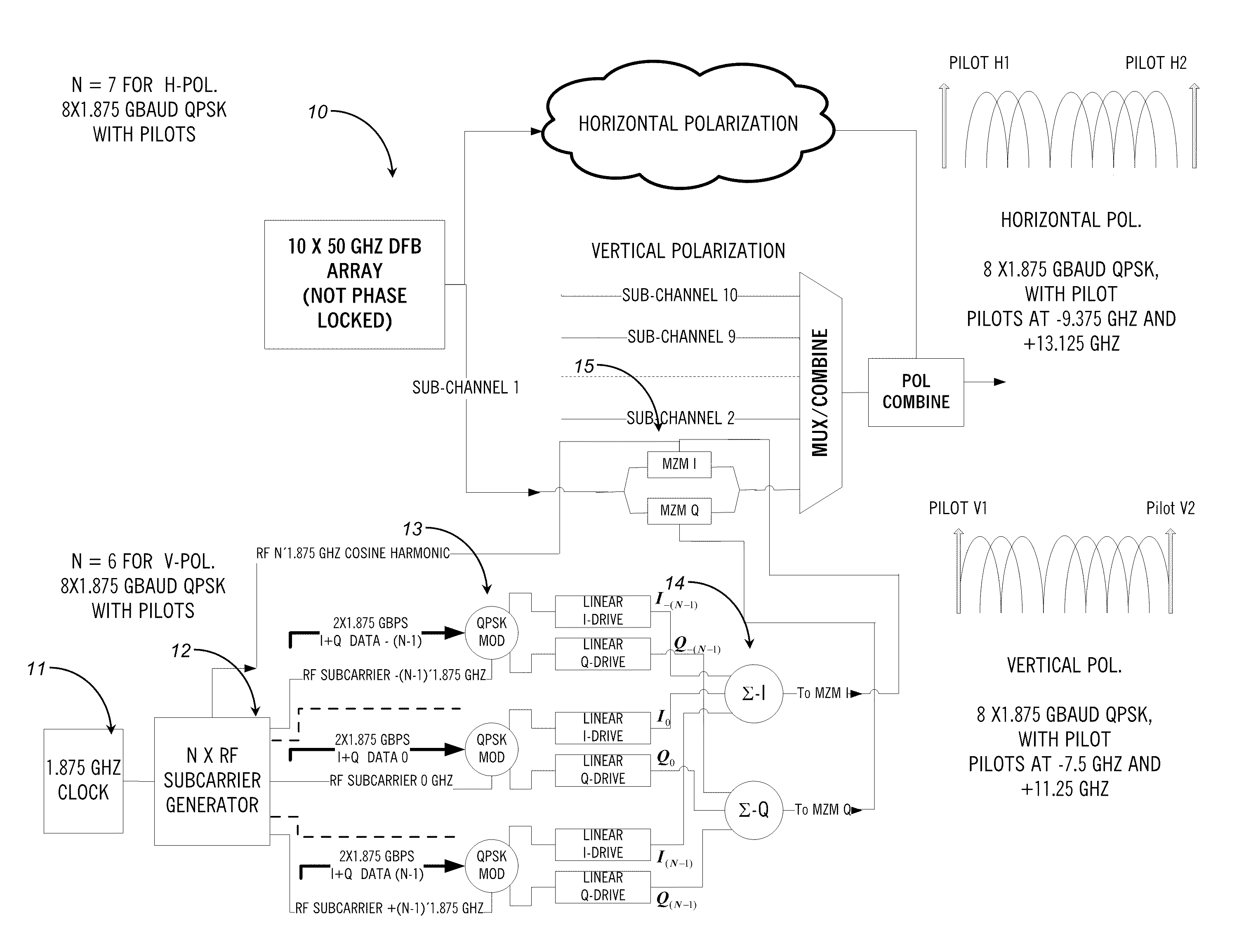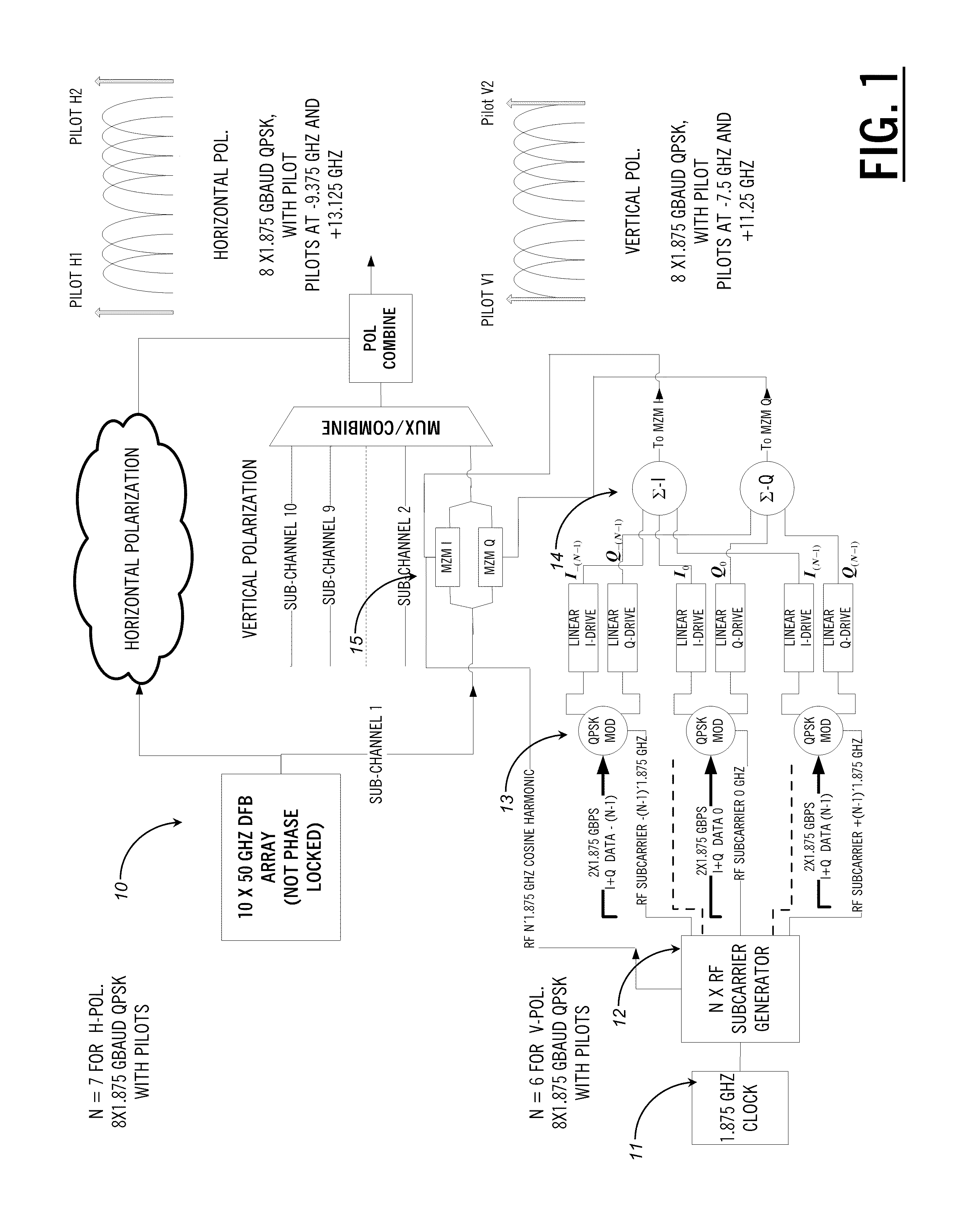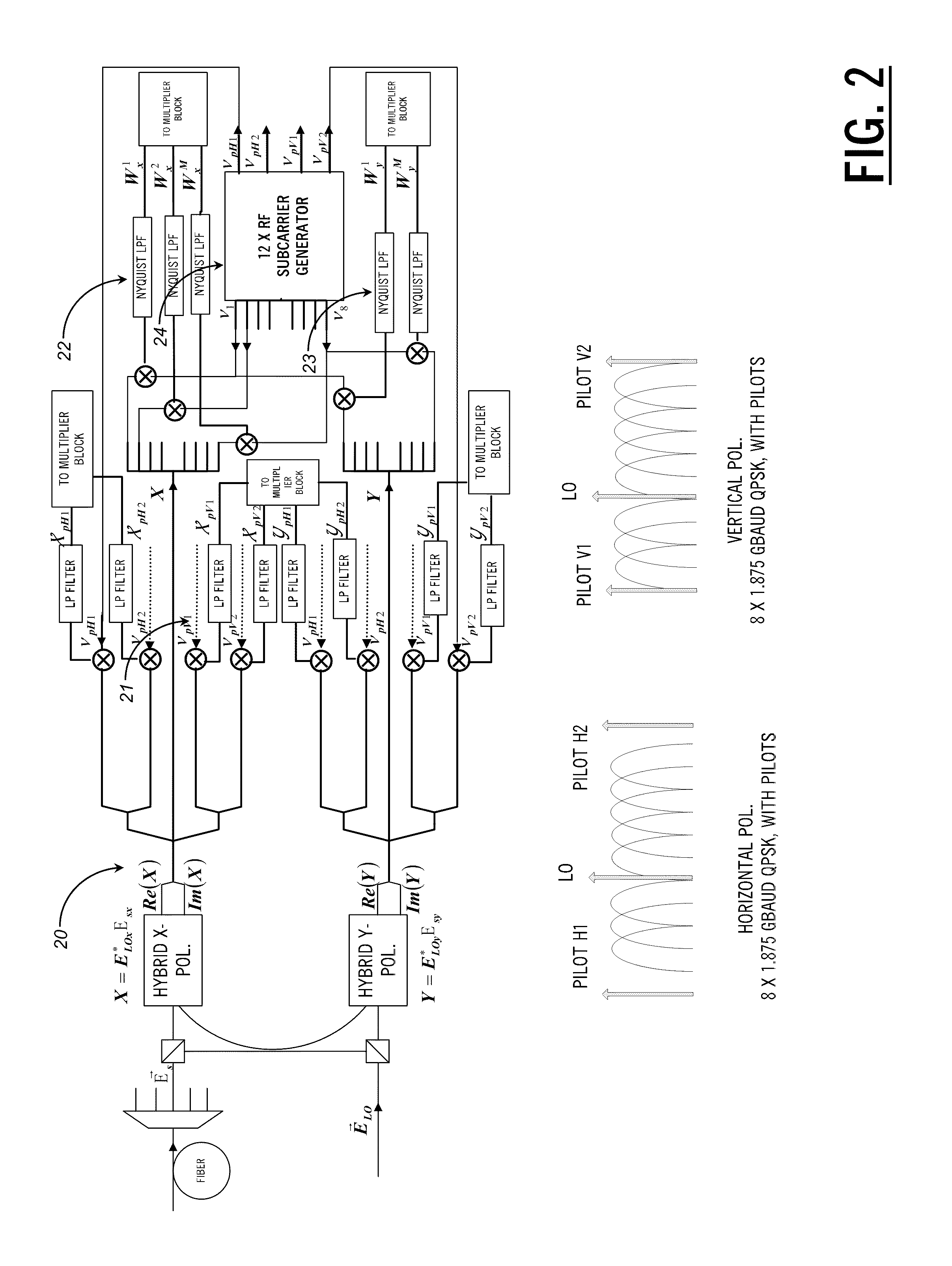Optical transceivers for use in fiber optic communication networks
a technology of optical transceivers and fiber optic communication networks, applied in the direction of multi-channel sub-channel allocation, polarisation multiplex systems, multi-channel communication, etc., can solve the problems of reduced optical unregenerated reach, high power consumption associated with digital signal processing (dsp) algorithms, and reduce circuit size and power consumption. , the effect of simplifying the above dsp algorithms
- Summary
- Abstract
- Description
- Claims
- Application Information
AI Technical Summary
Benefits of technology
Problems solved by technology
Method used
Image
Examples
Embodiment Construction
[0029]In various exemplary embodiments, the present disclosure provides an optical transceiver implementation that inherently simplifies the electronic signal processing design. This provides simplicity, an ability to use lower cost 65 nm CMOS geometries (i.e instead of 32 nm CMOS geometries, for example) or 130 nm BiCMOS geometries, for example, lowers overall power consumption, and provides a path to higher levels of power limited system density.
[0030]The individual building blocks used in the present disclosure, such as OFDM, pilot tones, etc., are generally known to those of ordinary skill in the art, in the broadest conceptual sense, however the present disclosure provides a unique feed forward algorithm for processing of the received signal, a unique combination of features and functionalities, and simplifications in the resulting signal processing algorithms that allow the introduction of analog signal processing in the high rate data path, while using digital algorithmic com...
PUM
 Login to View More
Login to View More Abstract
Description
Claims
Application Information
 Login to View More
Login to View More - R&D
- Intellectual Property
- Life Sciences
- Materials
- Tech Scout
- Unparalleled Data Quality
- Higher Quality Content
- 60% Fewer Hallucinations
Browse by: Latest US Patents, China's latest patents, Technical Efficacy Thesaurus, Application Domain, Technology Topic, Popular Technical Reports.
© 2025 PatSnap. All rights reserved.Legal|Privacy policy|Modern Slavery Act Transparency Statement|Sitemap|About US| Contact US: help@patsnap.com



